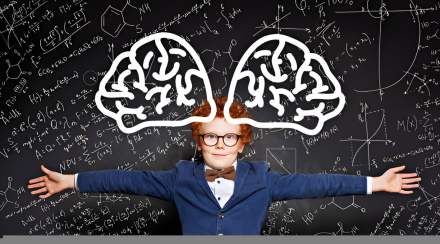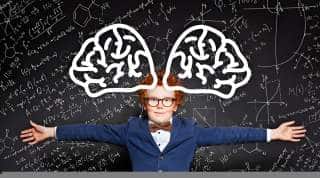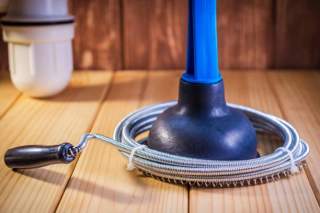Substance use disorder is a serious public health issue, and stimulant addiction is one of the most common yet least understood types of drug dependence. Whether caused by prescription medications such as Adderall and Ritalin or illicit drugs like cocaine and methamphetamines, stimulant addiction can ruin a person’s physical and mental well-being.
Educating oneself on the use and abuse of stimulants, always being on the lookout for signs of addiction, and getting professional help when necessary are important steps to take toward healing. This article will explain the concept of stimulant addiction, its effects, and the most effective treatment approaches.
What Are Stimulants?
Stimulants are defined as the class of drugs that increase the activity of the brain, which in turn increases alertness, energy, and focus. Some of the classes may be legally prescribed for ADHD and narcolepsy but are often abused or misused, resulting in dependence and addiction.
Types of Stimulants
1. Prescribed Stimulants:
- Adderall (amphetamine)
- Ritalin (methylphenidate)
- Concerta (methylphenidate)
- Dexedrine (dextroamphetamine)
2. Illicit Stimulants:
- Cocaine
- Crack cocaine
- Methamphetamine
- Ecstasy (MDMA)
Stimulants can only be prescribed cocaine professionally and under strict regulations, as they could lead to stimulant dependency when abused.
How Does Stimulant Addiction Develop?
Stimulant addiction begins when an individual overuses these substances due to their euphoric and performance-enhancing effects. With continuous use, the brain gradually develops an economic dependence on the drug to function normally.
Factors Contributing to Stimulant Addiction
- Misuse of Prescriptions: Many people begin using stimulant medications for legitimate medical purposes but eventually go on to self-increasing dosages without medical supervision.
- Recreational Consumption & Abuse: Some use stimulants for heightened focus, to prolong wakefulness, or to achieve a euphoric high.
- Social Pressure: Certain social groups, especially college students and working professionals, can engage each other to misuse stimulants.
- Genetics & Coexisting Mental Disorders: A family history of addiction and co-occurring mental illness increases the risk of addiction.
This collective change leads to dependence and higher dosages to achieve the same effects. Eventually, withdrawal symptoms will occur upon trying to stop.
Symptoms of Stimulant Addiction
Being aware of the warning signs of stimulant abuse is crucial, not only for the individual who may be abusing the substance but also for friends and family who may want to intervene before the problem worsens.
Physical Manifestations:
- Elevated heart rate and blood pressure
- Enlarged pupils
- Loss of appetite, resulting in weight loss
- Sleeping difficulties, including insomnia
- Persistent headaches
Behavioral and Psychological Manifestations:
- Mood shifts and increased irritability
- Sense of inner unrest and suspicion
- Oftentimes, drug addiction behavior that lacks restraint
- Impulsiveness and taking uncalculated risks
- A shift toward reclusive tendencies
If these symptoms are evident, it’s crucial to undergo professional therapy for stimulant addiction for optimal treatment results.
The Risks of Stimulant Abuse
The repercussions of stimulant dependency can be both immediate and prolonged, as they can put a tremendous strain on a person’s health, relationships, and overall life as one knows it.
Immediate Risks:
- Elevated heart rate with possible stroke
- Risky increases in blood pressure
- Aggression and restlessness
- Dehydration and excessive body overheating
- Shenanigans or hallucinating and coming unglued mentally/psychotically
Long-Term Consequence
- Problems of the heart dependable disease and extensive cardiovascular issues
- Stupidity in nonsocial life activities with obliteration of memory
- Ancillary visits to the graveyard because of overdose to the extent of dying instantly
- The feeling of hopelessness and circle of life thoughts in the head and grievous mental disorder
- Degradation of social skills and life partner prospects at work
If neglected, stimulant addiction has the potential to become chronic and lead to severe ailments as well as death.
Stimulant Addiction Treatment Options
Addiction and dependence on stimulants may seem daunting at first; however, with the right recovery mechanisms in place, it can be treated. Here are the most effective treatment options for stimulant dependence.
1. Medical Detoxification
Medical detox for stimulants is the first and foremost step to take when treating a patient with dependence. The process includes,
- Managing withdrawal symptoms with available assistive measures.
- Procedures that calm discomfort and avoid unfortunate consequences.
- Adequate emotional and mental guidance from attending staff.
2. Behavioral Therapies
Behavioral therapies assist patients with the identification of triggers, coping mechanisms, and reconstruction of self-destructive thought processes. The following therapies prove to be most effective in such cases:
- Cognitive Behavioral Therapy (CBT): Assists patients in identifying and changing negative behaviors associated with drug abuse.
- Contingency Management (CM): Engages patients into receiving rewards for attending recovery meetings as promised.
- Motivational Interviewing (MI): Provides the patient with means to internally motivate themselves further to allow recovery.
3. Inpatient Rehabilitation Enhancements
Inpatient rehabilitation is ideal for patients with stimulant addictions. The following features are included:
- Individual Support Features
- Counseling and Psychological support are available on a 24/7 basis, allowing the patients to feel supported.
- Inpatient treatment provides a controlled setting for the patients to receive:
- Individual and Group Therapy
- Yoga, Meditation, and other Fitness Programs
4. Outpatient Treatment Programs Updates
Outpatient programs enable flexible access for patients who do not have complete free time for full-time residential care. These included:
- Attending Therapy Audiences on a Weekly Basis
- Keeping Track of Medication Usage and Dosage in Appointments with Specialists
- Receiving Continuous Support from counselors and Non-Professional Helpers
5. Support Groups and Aftercare Update
Receiving continuous treatment offers sustainable long-term support for a variety of requirements. Support groups, for example, self-counseling aids such as Narcotics Anonymous (NA), aid in peer-healed self-dependency and offer direct help vis-à-vis constantly staying sober.
Preventing Stimulants Addiction Relapse
Being Relapsed is always an important issue to tackle after claiming recovery. Here are some measures that may help you from going back to familiar settings:
- Remember Relapse Indicators: These include people you identify with, and these would include your surroundings, activities as well as some locales.
- Develop Healthy Coping Skills: Completely new, robust or healthy ways of coping need to be identified in some cases. Activities such as exercising, meditation or any favorite hobby are good examples.
- Stay in your Peripheral Set of Contacts: Some routes will remain familiar, and routine therapy and self-support circle aids are able to provide motivation as well as direction.
- Have an Existing Appointment Mechanism: Each of us is able to cope with daily schedules. Keeping therapeutic exercises constant aids in decreasing boredom whilst shielding from temptation.
Key Takeaway: Recovery is Possible
Stimulant addiction is a complex problem, but it can be treated effectively. With the right combination of medical interventions, therapy, and support, people who are trying to overcome stimulant addiction are indeed able to regain control over their lives and achieve long-term sobriety.
If a friend or family member suffers from stimulant addiction, help is available. Go to Touchstone Recovery Center to get information on treatment approaches that can get an individual on the path to recovery.











Leave a Comment